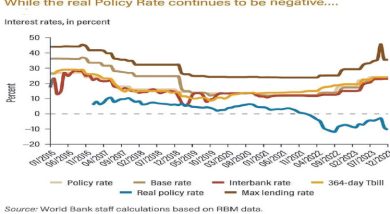Tea industry set for growth

Africa’s tea industry could sustain itself and advance at a faster pace if growers produce high quality tea, engage in value addition and diversify the types of beverage grown for maximum returns.
Tea Association of Malawi (Taml) chief executive officer Clement Thindwa said on Friday in Blantyre these are some of the issues the Second Africa Tea Convention and Exhibition in Kigali, Rwanda last week agreed upon and adopted.
Malawi is one of Africa’s largest producers of tea, a crop that wires in a substantial amount of foreign exchange. Last year’s earnings peaked at K16 billion, a 50 percent increase from the previous year’s K10.7 billion (about $26.7m), out of 41.8 million kilogrammes (kg) of the crop, down from the previous year’s 44.8 million kg.
Thindwa said the convention, graced by Rwanda’s president Paul Kagame, also agreed that marketing and branding and technology and opportunity have to be enhanced.
On quality, he said it was agreed that Africa attempts to produce high quality tea by adopting best practices in green leaf production, process and packaging
“There is need for Africa to embrace up and downstream operations and by production in the tea value chain for maximisation of returns. Again, for purposes of maximisation of returns and sustainability of the industry, Africa should embrace diversification into tea such as green tea, orthodox, white tea, purple tea and puar tea.
“Once more for the foregoing reasons, Africa needs to enhance its marketing of teas both locally and internationally through branding and promotion. It also requires adopting new but appropriate technologies across the tea value chain and embracing practices and standards that promote productivity and competitiveness,” said Thindwa.
Tea industry officials expect the price of the crop this year to remain firm largely buoyed by sustained growth in world demand and weak output which create a deficit in the commodity’s global supply.
Kenya, Sri-Lanka, India and Malawi registered lower output in 2012 due to adverse weather conditions and forecasts indicate that the situation is not likely to improve given that tea plantation areas around the world remain the same while demand continues to rise.
The tea convention themed ‘African tea, refreshing the world, growing the African economy’ was jointly organised by the Rwanda National Agriculture Export Development Board (Naeb) and the East Africa Tea Trade Association (Eatta), a voluntary organisation that comprises tea producers, buyers, packers, brokers and warehouses for the promotion of best interest in the tea trade in Africa.
The meeting was aimed at providing a unique platform from the tea players to interact and share ideas and experiences on how to better produce and trade in teas for sustainability and profitability across the entire supply chain—from the smallholder green leaf farmers, estates, processors and brokers through to the final consumer.
Apart from Thindwa, Malawi representatives at the meeting included Griffin Phiri, a manager at the Reserve Bank of Malawi (RBM), chairperson of Taml Sangwani Hara and his vice Atu Kalinga and Albert Changaya, director of Mulanje-based Tea Research Foundation Central Africa.
At the meeting, Taml arranged for a tripartite meeting with Kenya Smallholder Tea Development Agency chief executive officer Lerionka Tiampati, East African Tea Trade Association managing director Edward Mudibo and the Malawi delegation during which they discussed, among others, the need for the industry to approach the initiatives and interventions using a cooperative model with ownership by the farmers.
They also agreed on the need to formulate and prepare a business plan for sourcing of appropriate funding and nurturing stakeholder advocacy, need for government guaranteed loans for the project and also to consolidate smallholder farms.
With output of five metric tonnes per hectare of the tea at Kawalazi in Nkhata Bay, government and the tea industry can consider the adjacent areas of that estate for smallholder tea expansion initiative and establish a processing factory nearby.
Taml has of late engaged an extra gear to encourage more Malawians to drink tea.
Available figures show that over the past few years, Malawians used to consume two percent of all the tea produced in the country, with the rest (98 percent) exported.
But now, the figures have slightly changed, with only one percent consumed locally and the rest exported, according to Taml.
In this regard, the industry held a meeting with a certain firm which is willing to sponsor a Malawi Tea Day, an event set with the purpose of encouraging Malawians to be consuming more tea.





